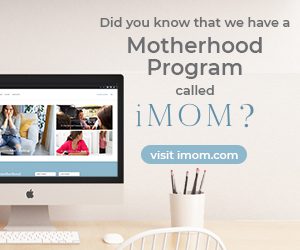Over 150,000 foster children are awaiting adoption in the United States. And while there are many families who could give them a wonderful home, these potential parents may be unsure of where to begin, or may think that the adoption process is too complicated.
The Dave Thomas Foundation for Adoption seeks to educate potential adoptive parents on the importance of adoption and how to begin the process. This article is based on the Foundation’s guide, A Child Is Waiting… A Beginner’s Guide to Adoption.
What is adoption? According to A Child Is Waiting, adoption is the “permanent, legal transfer of all parental rights from one person or couple to another person or couple… Adoptive parents are real parents.” Potential parents may adopt from the foster care system, an infant within the U.S. or a child from another country. Adoptions occur through public agencies, private agencies and through attorneys or other intermediaries.
While there is no set procedure for adoption, given the various agencies and types of adoption, the Dave Thomas Foundation provides these general guidelines to help potential parents begin the adoption process:
1. Learn about Adoption. Gather information from adoption organizations.
2. Self Assessment. According to the Dave Thomas Foundation, “Children don’t need perfect parents, just one or two loving individuals willing to meet the unique challenges of parenting and make a lifetime commitment to caring for and nurturing their children.” These parents should have a belief in the importance of adoption, patience, a sense of humor, the love of children and parenting, the ability to love unconditionally, awareness that healing doesn’t come quickly, and resourcefulness. Potential parents should ask themselves the reasons they want to adopt, whether or not they are committed as a team, and if their lifestyle allows them the time needed to meet the needs of a special child.
3. Decide What Type of Adoption You Want to Pursue. Potential parents need to consider what type of child they want to adopt. They should think about the potential age ranges and cultural backgrounds, the possibility of adopting siblings, and the possibility of adopting a child with mental or physical challenges.
4. Investigate Ways to Cover Adoption Expenses. Adoption fees vary from each state, type of adoption agency, and even the age of the child. But many financial resources are available to help adoptive parents. Many companies now include adoption benefits for their employees. The IRS website provides information on tax credits for adoptive families. Parents should also look into possible adoption subsidies with the assistance of their adoption agency or the North American Council on Adoptable Children’s Adoption Subsidy Resource Center (NACAC). Other options include loans and grants (contact the National Adoption Foundation (NAF) for more information), and military reimbursements (see National Adoption Information Clearinghouse [NAIC]).
5. Select an Adoption Agency. Parents should contact their state’s public adoption agency for a list of potential agencies, gather information for their local phonebook, and even contact local adoptive parent support groups for recommendations. Parents should find out what types of children are placed for adoption, criteria the agency uses for matching, the length of waiting for a child, home study requirements, cost of adoption, and even gather references from other parents who adopted through that agency.
6. Let Your Agency Know You Are Serious about Adopting. Once parents have decided to adopt, they need to set up an initial meeting with the adoption agency to begin the adoption process.
7. Complete an Adoption Application. Because application fees are often non-refundable, parents should make sure they have chosen the adoption agency that will best meet their needs. If possible, they should attend an orientation session before filling out the application.
8. Begin the Home Study Process. The home study is key to the adoption process. The Minnesota Adoption Resource Network defines a home study as, “an education process designed to help your social worker get to know you; to teach you about adoption and its impact on children and families; and to prepare you to parent a child who brings experiences, ideas, a history, and expectations perhaps very different from your own.” The home study may take anywhere from two months to a year, and may require various documentation, personal references and a physical examination.
9. Take Adoption and Parenting Classes. Many adoption agencies offer classes on parenting adopted children. Gather books and other resources. Parents can even take an online course through the National Adoption Center.
10. Begin Searching for a Child. Parents should work with their adoption agency on finding the right child. Other organizations also provide information on children with special needs who are available for adoption. Parents should also consider attending matching parties or adoption fairs.
11. Find the Perfect Match. Once a child has been identified, the prospective parents should learn as much about the child as possible through talking with the social worker or foster parents. This is also the time for parents to decide if they are prepared and committed to handle any special medical conditions or other issues.
12. Prepare for Your Child’s Arrival. Parents should consider the following preparations needed for the child’s arrival: health insurance coverage, obtaining the child’s original birth certificate, child care services (i.e. daycare or babysitter), creating a child-friendly home (i.e. creating a safe environment for a child, preparing the child’s room), preparing children already in the home for their new sibling, and obtaining any eligible adoption subsidies.
13. Bring Your Child Home. Once a child is moved into the home, the potential parents assume temporary legal custody. The agency will then monitor the adjustment period, ranging anywhere from a few weeks to a year. If the placement is a good match, the agency then recommends to the court that the adoption be approved.
14. File a Petition to Adopt. This step involves the formal petition in court to initiate the legal aspects of adoption. Parents may even want to consider hiring an attorney to help with this process. Parents will most likely need the child’s birth certificate; a written statement of desire, suitability and financial ability to adopt the child; a written statement that the adoption is in the child’s best interest; the date the parents received the child into custody; statement of why the birth parents’ rights are being (or have been) terminated; and a statement of any relationship shared with the child (i.e. aunt, grandparent, stepparent).
15. Finalize the Adoption. The finalization hearing will attempt to determine that the child has been placed in a loving, save home and is the last formal step in the adoption process. Parents should work with their agency in setting a finalization hearing to ensure they have all the proper documentation in place. Finalization hearings usually occur between 6 to 12 months after the child has been placed in the home, and are held in the judge’s chambers. Generally, the adoptive parents, the adopted child, the parents’ lawyer and the child’s social worker are present at this judicial hearing. Once the judge signs the adoption order, permanent legal custody is given to the adoptive parents and they can begin their new life together.
This article is based on the booklet, A Child Is Waiting… A Beginner’s Guide to Adoption, by the Dave Thomas Foundation for Adoption.









